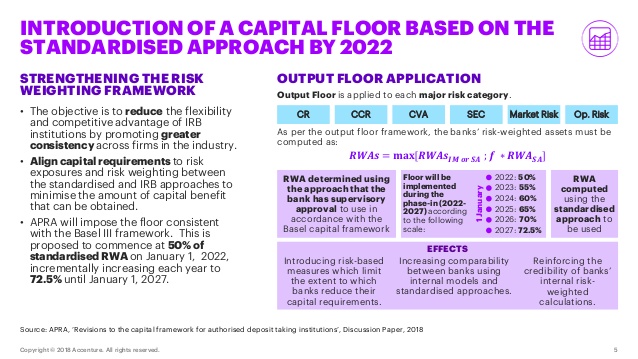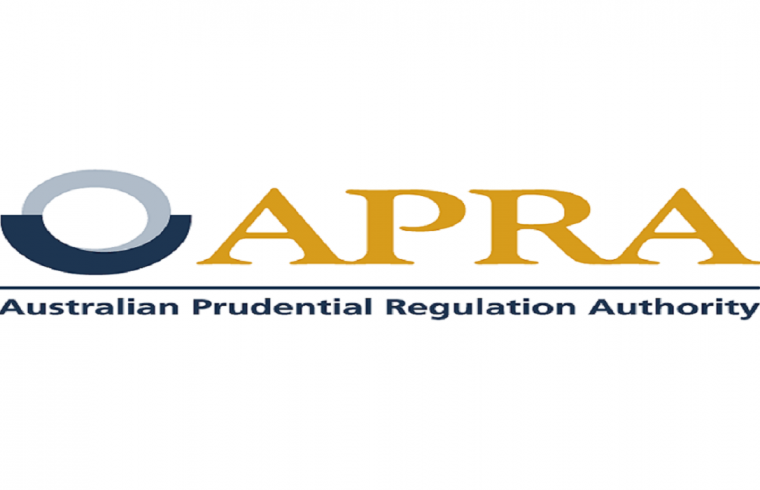The Australian Prudential Regulation Authority (APRA) has released its response to submissions on proposed changes to the application of the capital adequacy framework designed to support the orderly resolution of a failing authorised deposit-taking institution (ADI).
APRA released a discussion paper in November last year proposing that the four major Australian banks be required to increase their Total Capital by four to five percentage points of risk weighted assets (RWA) over four years. APRA expected the banks would meet the bulk of this requirement by raising additional Tier 2 capital. For small to medium ADIs, extra loss-absorbing capacity would be considered on a case-by-case basis as part of the resolution planning process.
The changes would increase the financial resources available for APRA to safely resolve an ADI, and minimise the need for taxpayer support, in the unlikely event of failure. They also fulfil a recommendation from the 2014 Financial System Inquiry that APRA implement a framework for minimum loss-absorbing and recapitalisation capacity.

Following extensive engagement with a range of stakeholders, APRA has announced an approach that will meaningfully lift the loss-absorbing capacity of the four major banks.
APRA will require the major banks to lift Total Capital by three percentage points of RWA by 1 January 2024. APRA’s overall long term target of an additional four to five percentage points of loss absorbing capacity remains unchanged. Over the next four years, APRA will consider the most feasible alternative method of sourcing the remaining one to two percentage points, taking into account the particular characteristics of the Australian financial system.
APRA amended its initial proposal in response to concerns raised in a number of submissions about a lack of sufficient market capacity to absorb an extra four to five per cent of RWA in Tier 2 issuance and the potential to excessively increase bank funding costs. A number of respondents provided useful market capacity analysis in their submissions. APRA also had extensive dialogue with ADIs, arrangers of Tier 2 issuance in global markets, and significant investors in Tier 2 instruments. Following this consultation process, APRA expects the issuance of an additional three percent of RWA in Tier 2 instruments can be achieved in an orderly manner, and be maintained through varied market conditions.
APRA Deputy Chair John Lonsdale said the measures were an important step in minimising the risks to depositors and taxpayers should Australia experience a future bank failure.
“The global financial crisis highlighted examples overseas where taxpayers had to bail out large banks due to a lack of residual financial capacity. Boosting loss-absorbing capacity enhances the safety of the financial system by increasing the financial resources that an ADI holds for the purpose of orderly resolution and the stabilisation of critical functions in the unlikely event that it fails.
“Although APRA’s proposed response may increase funding costs for Tier 2 instruments issued by major banks, overall funding cost increases can be expected to remain small. Having taken into account feedback on market capacity, increasing Total Capital requirements by three percentage points by 2024 (instead of the four to five originally proposed) will be easier for the market to absorb and reduce the risk of unintended market consequences.
“By lifting their Total Capital by three percentage points of risk-weighted assets, we estimate the major banks will cumulatively strengthen their loss-absorbing capacity by $50 billion. APRA looked closely at alternative approaches used in other jurisdictions but concluded that increasing the issuance of existing capital instruments was more appropriate taking into account the distinctive characteristics of the Australian financial system,” Mr Lonsdale said.
APRA estimates the increase in Total Capital requirements will have a small impact on overall funding costs – less than five basis points – an estimate well within the range of analysis conducted by the Reserve Bank of Australia using historical market data.
APRA’s Response Letter can be found on the APRA website here.












